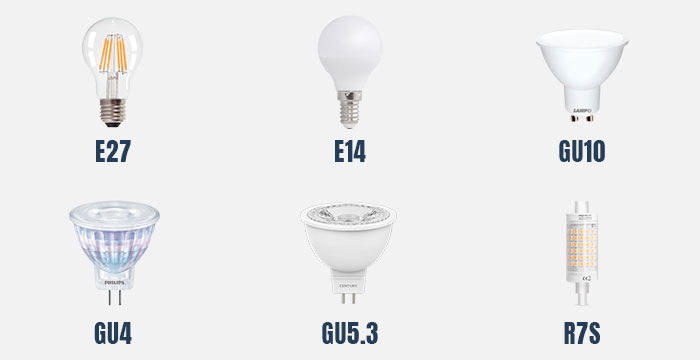- ELECTRICAL NEWS
- 0 likes
- 1060 views
- 0 comments

Light bulb socket: how many types exist and how to choose the right one
Buying a light bulb can seem quite simple at first glance. However, it is not always so immediate, especially if you do not follow some simple instructions. Otherwise, there is the risk of buying a bulb that you won't actually be able to use.
The variety of bulbs available on the market
The selection of light bulbs for sale on the market is wide to say the least. Consequently, once you have purchased a light bulb, you may realize that its connection is incorrect. This makes it impossible to screw it into the lamp holder, thus forcing you to return to the shop to replace it with the appropriate one.
Choose the right bulb socket
To avoid such inconveniences, it is important to know and understand the various types of light bulb sockets available. In this article, we will try to guide you in choosing the right bulb socket, to facilitate your future purchases.
How to understand the connection of a light bulb
To purchase the bulb with the right socket, it is vitally important to pay attention to the type of socket present in the lamp holder. The type of attack is usually identified with a very specific acronym.
The role of the light bulb socket
But what does the socket of a light bulb represent, technically speaking? This component is the connector through which the bulb is powered. Electrical energy is transferred from the fixture to the bulb through this interface, ensuring safe use of the device without the risk of burns or overheating.

Types of Bulb Socket
✔️ E14 and E27 bulb connection
Bulbs with an E27 or E14 socket are the most common on the market. The E27 connection, known as the connection with large thread, and the E14 connection, known as the one with narrow thread, are distinguished by the diameter referred to by their respective numbers (14mm or 27mm). These light bulbs, characterized by the "E" placed in front of the number of the acronym, a tribute to the inventor Thomas Edison, are traditionally used in the home in chandeliers, wall lamps and ceiling lights.
✔️ GU10 bulb connection
Bulbs with a GU10 socket are typically used in spotlights and spotlight holders. The installation of these bulbs is extremely simple: simply insert the two connectors into the respective holes in the lamp holder and turn them half a turn, thus blocking the bulb.
✔️ Double Plug Bulb Connection
Moving on to double plug bulbs, these are equipped with a 2-pin connection, located at a certain distance which defines the relative acronym: a GU 5.3 bulb has pins 5.3mm apart, a GU4 has a distance between the pins of 4mm and so on.
✔️ R7S bulb connection
Finally, the R7S socket is predominantly used in LED spotlights that include small chips on their surface. This type of attachment is typically used for larger spotlights such as, for example, outdoor headlights and projectors. To install a bulb with an R7S socket, just apply a little pressure and insert it into the appropriate lamp holder.








Comments (0)